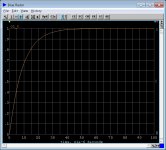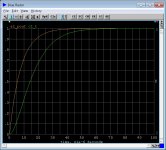I think I have it somewhere, I'll look for it.
In the mean time, to keep you guys quiet, see attached 🙂
Jan
Sigh. As many times as I tell people to read that (and Dick Greiner's paper on speaker cables, refs. 1-3 in the Davis paper), no-one seems to bother. Other than my compatriots in the Axis of Evil, of course.
Each time I download these and read, I feel just a bit more evil.
Speaking of...so what is it? Porcelain over wood? Combo of both?
Speaking of...so what is it? Porcelain over wood? Combo of both?
Sigh. As many times as I tell people to read that (and Dick Greiner's paper on speaker cables, refs. 1-3 in the Davis paper), no-one seems to bother. Other than my compatriots in the Axis of Evil, of course.
A few of us do Sy 😉.....which makes the length and (d)-evolution of this thread all the more perplexing. 😕
I think I have it somewhere, I'll look for it.
In the mean time, to keep you guys quiet, see attached 🙂
Jan
Ah, you're killing me... <=note the correct use of that apostrophe...
I'm in the wrong office, I marked up that paper, as there were (I believe) 4 incorrect things on it.
That said, he neglects C as too small, leaving only L, lets run with it.
So, Let's talk about a cable of characteristic impedance of 200 ohms. That cable has an inductance of 454 nH/ft, and 11.3 pF per foot (assumption is standard zip cable.
What is the settling time of a lumped element model with L =454 nH and R = 1 ohm? what is it at R = 10 ohms, at 100?
Now, a cable of 50 ohms with an L of 113 nH per foot and 45 pf/ft with R of 1, 10, 100.
Next, a cable of 10 ohms with an L of 22 nH/ft and C of 227 pF/ft. Again, with R =1, 10, and 100.
If the load were constant, we wouldn't be having this discussion..
jn
and that's just a start. It gets even more interesting when the system is considered in regard to to the ITD levels humans are capable of.
Last edited:
Irrelevent. You've consistently used rise times way too fast to be relevent to audio, and settle time in response to fast rise times misses the point.Well, what are the answers
You need to answer your own set question, but using audio representative rise times. What is the latency at 95% of the transition for a 25uS rise time step input using the TL in your jpg ? When you answer it correctly, you'll realise your argument is sunk.
Irrelevent.
No, it isn't. You may wish it to be as the answers are not to your liking. Diversion is somehow consistent for you. Go ask a good prof, they will be able to help you understand.
You've consistently used rise times way too fast to be relevent to audio, and settle time in response to fast rise times misses the point.
The system settling times are not dependent on the rise time. You need to learn this topic.
You need to answer your own set question, but using audio representative rise times. What is the latency at 95% of the transition for a 25uS rise time step input using the TL in your jpg ?
The same delay will occur from the 95% to 95% point regardless of the speed of the risetime.
You still don't understand. Seek the aid of a good EE prof, google is not helping you here.
jn
Wrong. Knuckle down and do the maths, when you get it right you'll see the mistake that underpins all this nonsense.The same delay will occur from the 95% to 95% point regardless of the speed of the risetime.
Wrong. Knuckle down and do the maths, when you get it right you'll see the mistake that underpins all this nonsense.
You still do not understand t-lines. Remember, you're still trying to measure from one end to the other, which of course, is conceptually wrong.
I've measured this stuff. Cyril has measured it.
Scott duplicated it with multielement LCR.
Seek the assistance of a good EE prof.
Forget google.
Remember, the fact that you do not understand it does not mean it doesn't exist.
edit: one of the most important things they teach is how to apply a model, what the model accuracy boundaries are, where the model falls short... The T-line model sets the lower boundaries on how fast (or slow) a system can respond (especially with R neglected). It is a combination of understandings that you have been unable to grasp as of yet. However, I still do not believe I have wasted my time with you.
jn
Last edited:
At risk of repetition, just do it jneutron.Wrong. Knuckle down and do the maths, when you get it right you'll see the mistake that underpins all this nonsense.
At risk of repetition, just do it jneutron.
Ah, then you will not answer the questions.
Go ahead, don't be afraid. The answer won't bite you.
It will however, show that even a 20 foot long 100 ohm cable cannot bring a 1 ohm load up to 95% value within 5 or even 10 microseconds...something you called "geological").
I await your numbers. I've already done so, and presented the resultant plots.
You deflect.
jn
Sigh...Jan, I just know I'm gonna end up with an article on this goop. Another two years I fear, assuming I find a collaborator with test equipment consistent with what I've used in the past. No COI in doing that..
Last edited:
No you haven't.I've already done so, and presented the resultant plots.
You need to answer your own set question, but using audio representative rise times. What is the latency at 95% of the transition for a 25uS rise time step input using the TL in your jpg ? When you answer it correctly, you'll realise your argument is sunk.
You can do this, right ?
Scott, IIRC, used 10 elements.
Cyril used 201 only because he was modelling out to 10 Mhz I believe. He had a distinct rf slant on some aspects of what he was doing, as he was troubleshoting amp/cable interactions that were causing hf burst oscillations.
jn
No, I copied Bateman's stuff exactly (good thing SPICE has a copy and paste).
Wrong. Knuckle down and do the maths, when you get it right you'll see the mistake that underpins all this nonsense.
Come on guys RLC only EE101 style, jn's numbers for 200 Ohms and 20 feet in to 1 Ohm.
20*11.3pF and 20*454nH and 1 ohm with 1ns rise voltage source = 1V, 1/2 power point seems to be 11usec
I'm not going to re-enter my 201 segment T-line but there were little ~40ns steps crawling right up the same line.
Attachments
Last edited:
No, I copied Bateman's stuff exactly (good thing SPICE has a copy and paste).
Oh, ok..For some reason, I thought it was 10. My bad.
Thanks scott. That's why I posted the numbers.Come on guys RLC only EE101 style, jn's numbers for 200 Ohms and 20 feet in to 1 Ohm.
20*11.3pF and 20*454nH and 1 ohm with 1ns rise voltage source = 1V, 1/2 power point seems to be 11usec
11 uSec with only 20 feet is rather consistent with my TL spreadsheets.
It's also interesting that Cyril mentions a factor of 3 or more at audio frequencies, which tosses the Z up into 400 plus ohms. But I suspect what you've done here with my numbers should be sufficient.
What's not obvious to most is how that mismatch is frequency dependent, as the speaker load certainly is. It does indeed hurt to think that much.
Thanks again scott. Need any resistors?
Hey, give me some feedback on the article when you get a chance. I'd appreciate it.
jn
Last edited:
Super, seems plausible. But 1nS rise time renders it irrelevant to audio. Need to examine 25uS rise time, and examine latency at say 1/2 power point so as to conserve a time reference.20*11.3pF and 20*454nH and 1 ohm with 1ns rise voltage source = 1V, 1/2 power point seems to be 11usec
Super, seems plausible. But 1nS rise time renders it irrelevant to audio. Need to examine 25uS rise time, and examine latency at say 1/2 power point so as to conserve a time reference.
No, you still do not understand. No matter how slow the slew rate is, the system cannot follow the input any faster than it's step response.
This is a standard control system tenet.
jn
Super, seems plausible. But 1nS rise time renders it irrelevant to audio.
No, that's 3us group delay at 1kHz and 22us at 20kHz. You bandwidth limit the input and still get it, easier to see in the phase plot. Input top (~-45 at 20k), output bottom.
Attachments
Of course, but audio input is far slower than cable step response........No matter how slow the slew rate is, the system cannot follow the input any faster than it's step response.
This is a standard control system tenet.
jn
- Status
- Not open for further replies.
- Home
- Member Areas
- The Lounge
- Speaker Cable lifters or stands?


